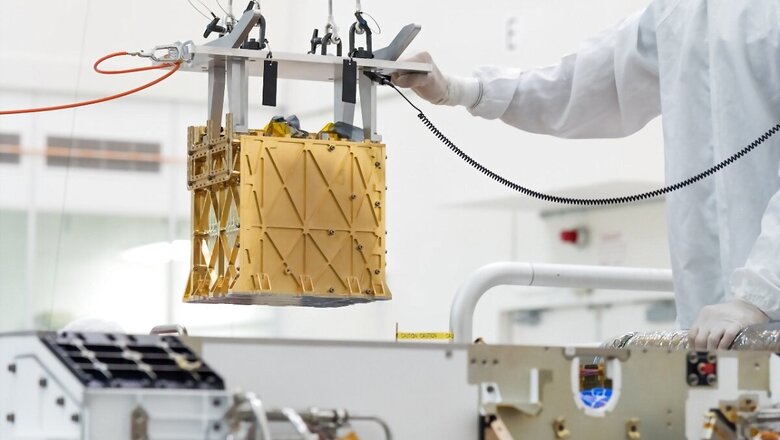
views
Earlier today, news broke about a benchmark achievement of mankind artificially synthesising oxygen in an extraterrestrial world for the first time ever. The achievement comes courtesy of Moxie, a tiny, toaster-sized instrument aboard the NASA Perseverance rover, which was tasked with a critical piece of experiment that may one day help mankind establish a colony on another planet – or better still, do so by generating enough oxygen to make it self-sustaining. Given how critical oxygen is to space explorations, Moxie and its achievements will be regarded as pioneering, although the first breakthrough is only the preamble to a long journey that will last two years in the first place.
How Mars got some more oxygen
Moxie, which stands for Mars Oxygen In-situ Resource Utilisation Experiment, is a small instrument that has a whole bunch of filters and a motor to generate heat that’s essential for the chemical equation of this experiment. In its first stage, Moxie used its filters to capture atmospheric carbon dioxide from the red planet’s thin atmosphere. Once captured, it was then passed through more filters to be purified, in preparation for the next steps of the process.
The subsequent steps of oxygen synthesis included applying heat inside the gold foil chambers of Moxie to split up the carbon dioxide molecule, which then split it up into oxygen and carbon monoxide. Using this process, Moxie could streamline production of 5.4 grams of atmospheric oxygen in one hour – enough for a human on Mars to breathe for 10 minutes. The process will be sustained for one full Martian year, which NASA states will be key to understanding circumstances around oxygen synthesis in different circumstances in space.
Speaking about the achievement, Trudy Kortes, director of technology demonstrations at the NASA space technology mission directorate (STMD), said, “Moxie isn’t just the first instrument to produce oxygen on another world. It’s the first technology of its kind that will help future missions “live off the land,” using elements of another world’s environment, also known as in-situ resource utilisation. It’s taking regolith, the substance you find on the ground, and putting it through a processing plant, making it into a large structure, or taking carbon dioxide – the bulk of the atmosphere – and converting it into oxygen.”
The path forward
The first step is only the first experiment of the first mission involving Moxie on the NASA Perseverance rover. Eventually, Moxie will carry out 10 experiments spread across three phases through an entire Martian year, which is roughly two Earth years. After the first phase of characterisation of the instrument with the Martian atmosphere, the second phase will include oxygen synthesis across various circumstances such as different times of the day and different seasons on Mars. The third phase will be more experimental, involving different operation modes to experiment with creating oxygen more efficiently.
Going forward, the generated oxygen will not just be important for setting up human missions and explorations of different worlds, but also maximise the potential range of space missions to distant worlds. As Jim Reuter, associate administrator of the NASA STMD, said, “Moxie has more work to do, but the results from this technology demonstration are full of promise as we move toward our goal of one day seeing humans on Mars. Oxygen isn’t just the stuff we breathe. Rocket propellant depends on oxygen, and future explorers will depend on producing propellant on Mars to make the trip home.”
This, therefore, is only the preamble for Moxie, the diminutive little machine tasked with showing future human explorers the way to breathe – and power their way back home.
Read all the Latest News, Breaking News and Coronavirus News here. Follow us on Facebook, Twitter and Telegram.




















Comments
0 comment